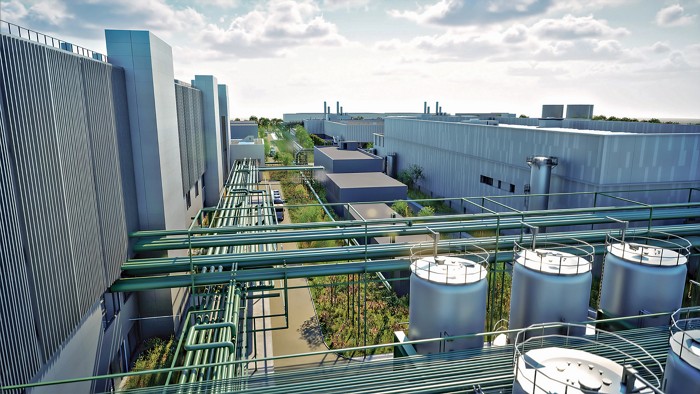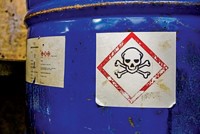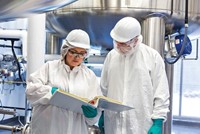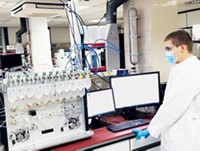Advertisement
Grab your lab coat. Let's get started
Welcome!
Welcome!
Create an account below to get 6 C&EN articles per month, receive newsletters and more - all free.
It seems this is your first time logging in online. Please enter the following information to continue.
As an ACS member you automatically get access to this site. All we need is few more details to create your reading experience.
Not you? Sign in with a different account.
Not you? Sign in with a different account.
ERROR 1
ERROR 1
ERROR 2
ERROR 2
ERROR 2
ERROR 2
ERROR 2
Password and Confirm password must match.
If you have an ACS member number, please enter it here so we can link this account to your membership. (optional)
ERROR 2
ACS values your privacy. By submitting your information, you are gaining access to C&EN and subscribing to our weekly newsletter. We use the information you provide to make your reading experience better, and we will never sell your data to third party members.
Pharmaceutical Chemicals
What making weight-loss drugs means for the environment
Experts warn that current methods of making the peptide drugs are environmentally unfriendly
by Aayushi Pratap
April 28, 2024
| A version of this story appeared in
Volume 102, Issue 13

Novo Nordisk is spending $6 billion in Kalundborg, Denmark, to expand the production of active pharmaceutical ingredients (APIs), including peptides used in weight-loss and antidiabetic drugs. The Danish company’s rival, Eli Lilly and Company, recently built a peptide synthesis plant in Kinsale, Ireland.
Novo Nordisk’s Wegovy and Lilly’s Zepbound aren’t just changing how the public thinks about weight loss. These peptide-based drugs and others expected to follow are spurring big changes in pharmaceutical chemical manufacturing. The two companies, as well as third-party manufacturers, are building huge new facilities to make the ingredients needed for these drugs.
By the numbers
14 t
Amount of solvent that can be consumed to produce 1 kg of GLP-1 agonist peptide
0.3 t
Amount of solvent that can be consumed to produce 1 kg of a typical small-molecule drug
Source: Journal of Organic Chemistry.
But synthesizing peptides is notoriously inefficient, and with the investments come questions about the environmental cost of making the popular weight-loss and antidiabetic drugs.
The active substances in Wegovy and Zepbound are the 31-amino-acid-long semaglutide and the 39-amino-acid-long tirzepatide, respectively. Both peptides mimic the natural body hormone glucagon-like peptide-1 (GLP-1). The drugs regulate blood sugar levels and reduce appetite, which results in weight loss and antidiabetic benefits.
The demand for such drugs has skyrocketed since their approval by the US Food and Drug Administration. Novo Nordisk’s antidiabetic drug, Ozempic, was approved in 2017, and Wegovy in 2021. Lilly’s corresponding drugs, Mounjaro and Zepbound, got the green light in 2022 and 2023.
Last year, Novo Nordisk brought in $18.4 billion from combined sales of Ozempic and Wegovy; Lilly reported $5.3 billion in total sales of Mounjaro and Zepbound.
And demand is expected to rise even further. Novo Nordisk estimates that 813 million people have “obesity,” but its drugs have reached only 1.1 million. Reports from Goldman Sachs suggest that annual sales could hit $100 billion by 2030.
Companies are finding it hard to keep up with the demand even now, and shortages are occurring repeatedly. Both Novo Nordisk and Lilly are investing billions of dollars to scale up production. Other companies also see significant opportunities in the peptide business.
Semaglutide soars

Note: Sales were converted at the recent exchange rate of $1.00 = 7.1 Danish kroner.
For instance, Bachem, which makes peptides and oligonucleotides for drug companies, will spend over $1 billion at two sites in Switzerland to expand production of the molecules. The firm estimates that the current peptide API market is worth $1.7 billion annually and represents over 1,100 pharma peptide projects worldwide.
But as business booms, experts warn that peptide-based drugs are not being made sustainably. Scaling up production using current practices could lead to an unprecedented increase in industrial waste.
Peptides can be synthesized in a handful of ways, but the most common industrial method is solid-phase peptide synthesis (SPPS), according to Rodney Lax, a former business development manager at PolyPeptide, a leading peptide manufacturer. “SPPS, however, was not originally designed to make multiton manufacture of peptides in a sustainable way, and this is a problem,” he says.
Companies have been using SPPS ever since Bruce Merrifield introduced it in the 1960s—an invention for which he won the Nobel Prize in Chemistry. Until then, the go-to approach was liquid-phase synthesis, which is still sometimes used to make peptides of lengths up to around 20 amino acids. But the liquid-phase method isn’t ideal for longer peptides like semaglutide and tirzepatide because of problematic purification processes.
The solid-phase method, which allows peptides of up to 70 amino acids long, works almost like threading beads together one after another. The process starts with fixing the first amino acid of the desired peptide on a polymer and covering the N-terminal with a protecting agent to prevent it from self-reacting. The protective group is removed when the next amino acid in the sequence is added along with a coupling reagent to form an amide bond between the two amino acids. This process is repeated until all the amino acids are joined to make the peptide, which is then purified using techniques such as high-performance liquid chromatography.
“The procedures require the use of very substantial quantities of organic solvents, which is essentially just organic waste. At industrial scale, it is a dirty process,” Lax says.
The most commonly used organic solvents for peptide manufacture are N,N-dimethylformamide (DMF), N-methyl-2-pyrrolidone, and dichloromethane, all of which are known to be hazardous. But even short-term exposure to these solvents can cause health problems such as abdominal pain, nausea, vomiting, jaundice, rashes, and cancer in humans and animals.
To protect workers from the health impacts of these solvents, the European Union introduced regulations in 2021 that limit exposure to DMF to 6 mg/m3via inhalation and 1.1 mg/kg per day via skin.
While these solvents are used in many industries, including the production of paints, adhesives, and small-molecule drugs, the amounts needed in the peptide sector are exceptionally large, according to Lax.
Depending on the length, producing 1 kg of GLP-1 receptor agonist peptide can require up to 14 metric tons (t) of solvent, according to a study published this year (DOI: 10.1021/acs.joc.3c01494). In contrast, producing most other synthetic small molecules typically takes about 0.3 t of solvent per kilogram.
“It is worrying to see how making these weight-loss drugs seems to have a huge implication on the environment,” says Matteo Villain, a vice president and global peptide technical lead at Piramal Pharma Solutions, a drug contract development and manufacturing organization (CDMO).
Lax and Villain—both industry veterans—say that while the size of the peptide industry has grown, the ways to make them haven’t changed much. About 15 years ago, the industry was making only three therapeutic peptides, each of which were produced at a scale of about 100 kg per year, Lax says. “Today, we are talking about multi-metric-ton quantities of peptides. This is a scale-up of about 700 to about 1,000 times using the same method.”
Lilly and Novo Nordisk take different approaches to peptide manufacture.
Lilly outsources the production of fragments of tirzepatide to CDMOs and then assembles these fragments at its own facilities, including at the Kinsale site.
At least two major CDMOs, China-based WuXi AppTec and the German firm CordenPharma, make peptide fragments for Lilly’s drugs using SPPS.
WuXi AppTec executives say the company has tripled its peptide-making capacity since January and now has the infrastructure and capability to produce 32,000 L of peptides annually using SPPS. “The demand for peptide drugs suddenly changed with GLP-1 weight-loss drugs,” says Minzhang Chen, the firm’s co-CEO.
WuXi AppTec opened two peptide plants in China in January, one at its Changzhou facility and another at its new site at Taixing. “Every year, we will add capacity for small-molecule APIs and peptides,” Chen says.
CordenPharma has also increased its footprint in the peptide business. In 2023, the company inaugurated a $60 million addition to its facility in Boulder, Colorado, which it calls the world’s largest SSPS facility. Roche originally built the plant to produce the peptide-based AIDS drug Fuzeon.
“We are seeing a rising demand from our customers. And if there is a further demand, we can accommodate it,” says CordenPharma CEO Michael Quirmbach. Novo Nordisk uses a yeast-based fermentation approach to engineer the backbone for semaglutide, which is then chemically modified. “This method is likely a little bit greener when applied to large-scale manufacturing,” Villain says.
But Lilly’s tirzepatide is more complex than semaglutide and could be challenging to make via fermentation, according to Villain. “With the growing complexity of peptides, chemical synthesis becomes the only efficient way to make them,” he says.
Villain thinks that a pervasive problem is that innovators looking to launch a new drug often think about greener production methods only in the late stages of development.
Some observers say the industry needs to do more to move away from SPPS. “The demand for the amounts of peptides is beyond imagination,” says Leendert van den Bos, CEO of the peptide manufacturer EnzyTag. “Of course, you can just construct 50 football fields with new solid-phase peptide synthesis reactors, but I don’t think that’s the way to go.” The Dutch company has codeveloped a technology that uses peptiligases, a class of enzymes that facilitate the coupling of peptide fragments without the use of solvents.
Paramjit Arora, a professor of chemistry at New York University and president of the American Peptide Society, says the focus on greener processes has intensified in recent years.
“Until 5 years ago, when somebody talked about green chemistry processes for peptide synthesis, we thought we would eventually like to use them,” he says. “But now, if we don’t urgently adopt them, the field could suffer greatly.”
Arora’s lab is focused on developing catalysts that could enable the elongation of amino acids with minimal use of solvents. But the research is not ready for commercial adoption. “As of today, there is no viable catalyst for chemical synthesis of peptides and proteins from standard amino acids,” he says.
CDMOs too are finding new ways of making peptides that are less damaging to the environment. In 2022, CordenPharma collaborated with the Swedish instrument maker PeptiSystems on a new concept that allows the solid-phase manufacturing of peptides in continuous mode, a change that the firm says reduces solvent consumption by at least 40%. The company installed the technology in its Germany plant but not at its bigger facility in Boulder.
PolyPeptide, Lax’s former company, says it invested nearly $266 million between 2020 and 2023 to scale up peptide production. Last year, the company deployed what it calls the “percolation-based washing method,” which reduced its overall solvent consumption by 24% compared with 2022. PolyPeptide is also expanding its usage of green solvents, which have a smaller environmental impact.
“Last year we managed to start 13% of our projects with green solvents,” John Lee, an R&D chemist at PolyPeptide, says in an email.
But Arora notes that green solvents can’t be used for the synthesis of all kinds of peptides. And Lee says that the industry is generally reluctant to make the shift to greener solvents. “Many companies are ‘fixed’ on a standard way of doing things,” he says.
Villain points out that there is a misconception that green peptide synthesis only means using environmentally friendly solvents. “It also means using nasty solvents in as little quantities as possible and recycling them,” he says.
Although he agrees that green peptide synthesis is a hot topic in the scientific and industrial communities, Villain doesn’t see hazardous solvents going away anytime soon. “There are significant efforts to make peptide manufacturing greener, but we are far from the optimal point in terms of green chemistry in the peptide world,” he says. “People are working on it, just not in a concerted way.”





Join the conversation
Contact the reporter
Submit a Letter to the Editor for publication
Engage with us on Twitter